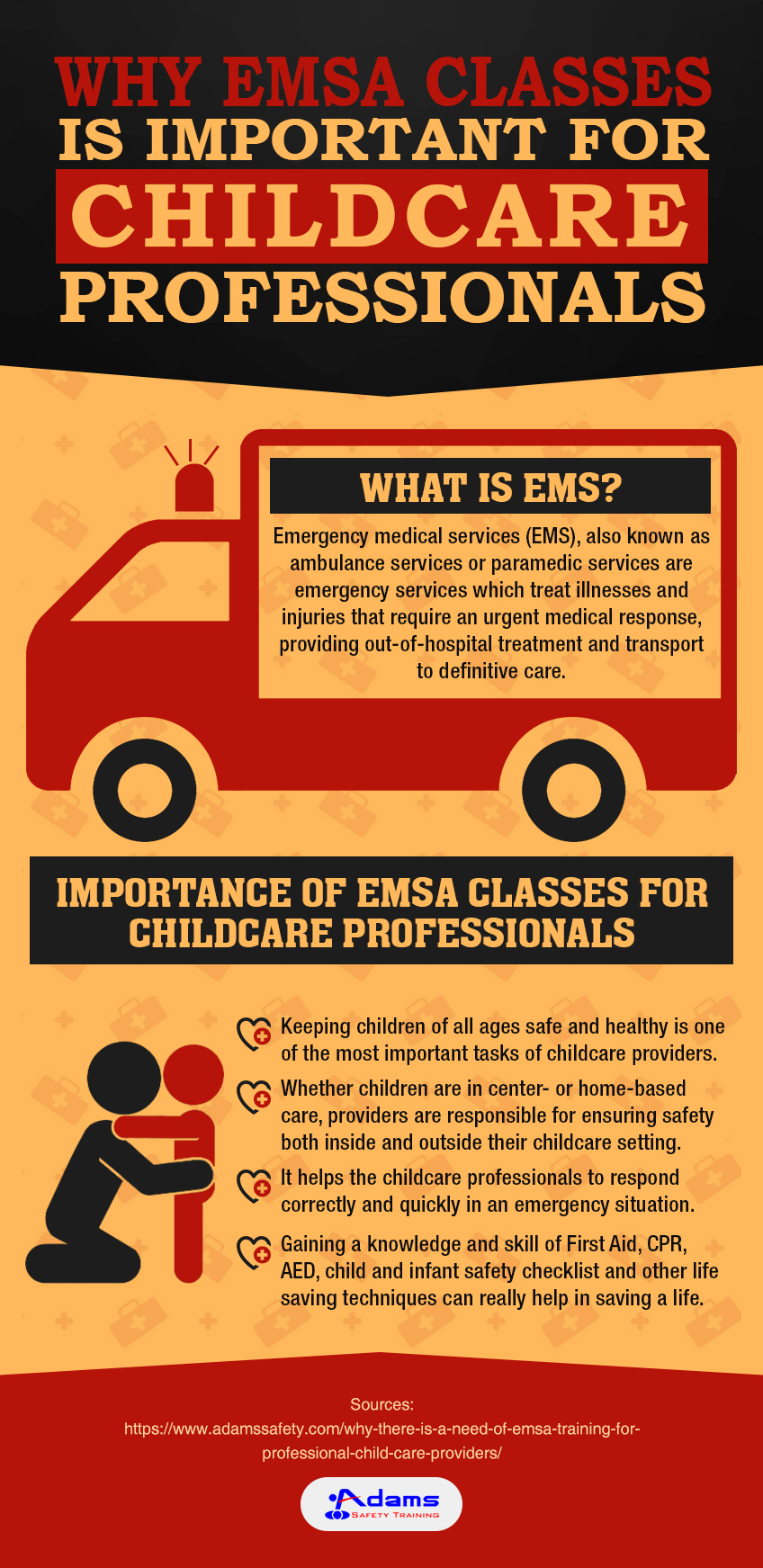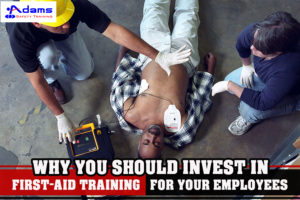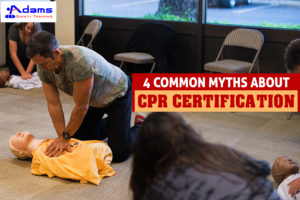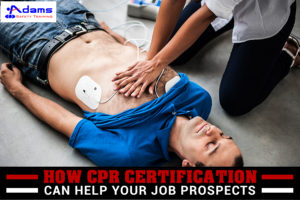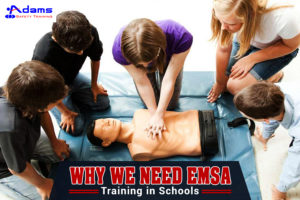This infographic titled “Why EMSA Classes is Important for Childcare Professionals” sheds the light on the need for EMSA classes for people who work with children. This includes nannies, teachers, care providers and even family members. These classes are designed to teach the correct procedure when dealing with an emergency involving children.
EMSA classes are based on the training provided to Emergency Medical Services or EMS, also known as ambulance services or paramedic services. These services are critical for in emergencies that require immediate medical response. EMS services can be used to provide out-of-hospital care or to aid a patient while in transport to definitive care.
Ensuring health and safety: the primary goal of childcare providers is to see that their charges are safe and healthy. EMSA classes stress on the correct means of ensuring both. The course includes the primary safety measures that we must take when dealing with children. Healthy practices are also detailed to see that children illnesses are dealt with in the right manner.
Secure premises: Children are accident-prone because they are not old enough to evaluate the dangers in their environment or how to safeguard themselves. This is why we as adults have to be so vigilant around them. This applies to both the indoor environment as well as the outdoors. EMSA teaches the basic security measures that must be taken for ensuring safety of children whether inside a home or in the playground.
Emergency dealings: Despite all the precautions accidents can happen. From cuts, bruises to chocking accidents — children can get into any number of mishaps. Childcare providers must know the right way of dealing with such emergencies. EMSA classes teach childcare providers to respond correctly and promptly in emergency situations.
Saving lives: The skills learnt in EMSA classes can help you save someone’s life in an emergency. Although it is mainly devised for childcare providers, knowing First-Aid, CPR, and AED can be a valuable skill in any emergency.
